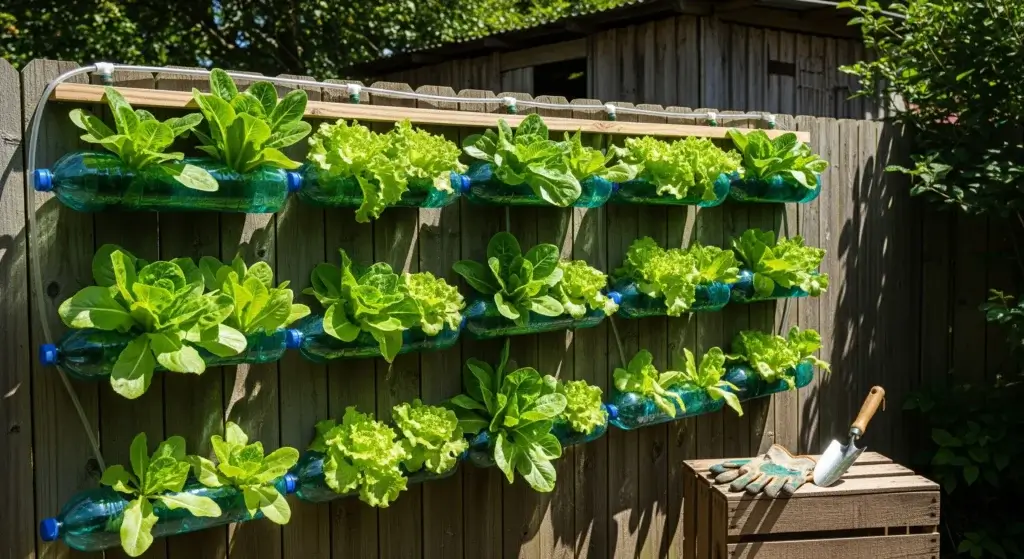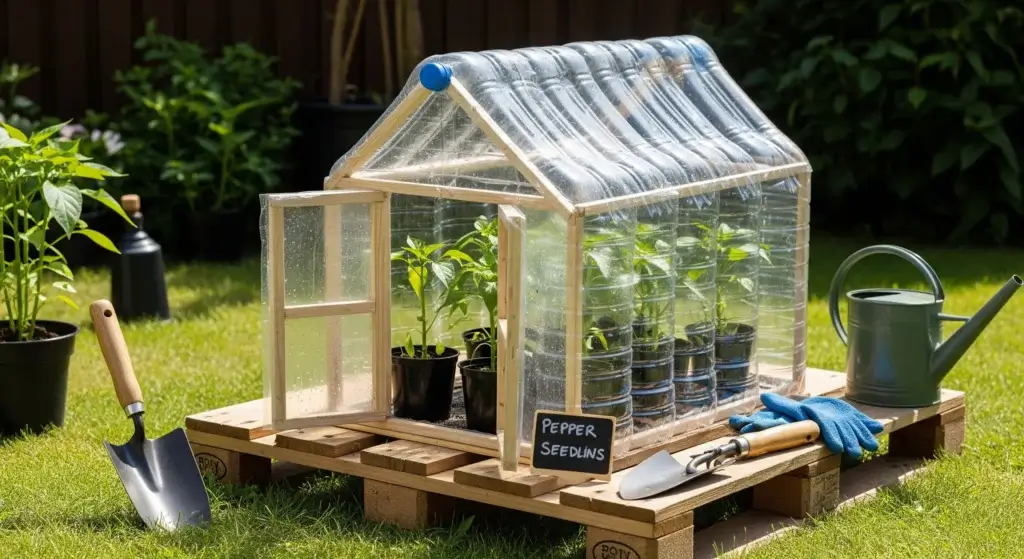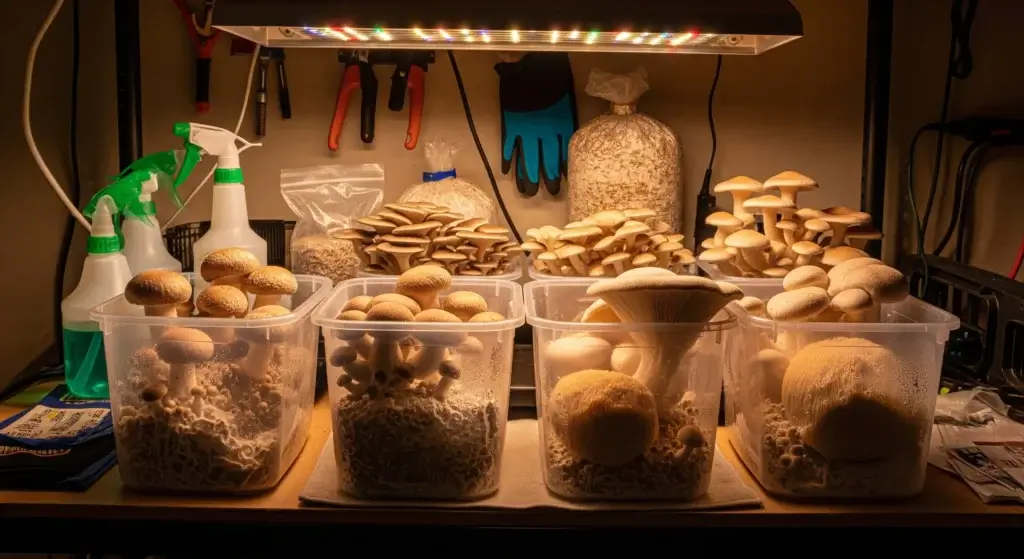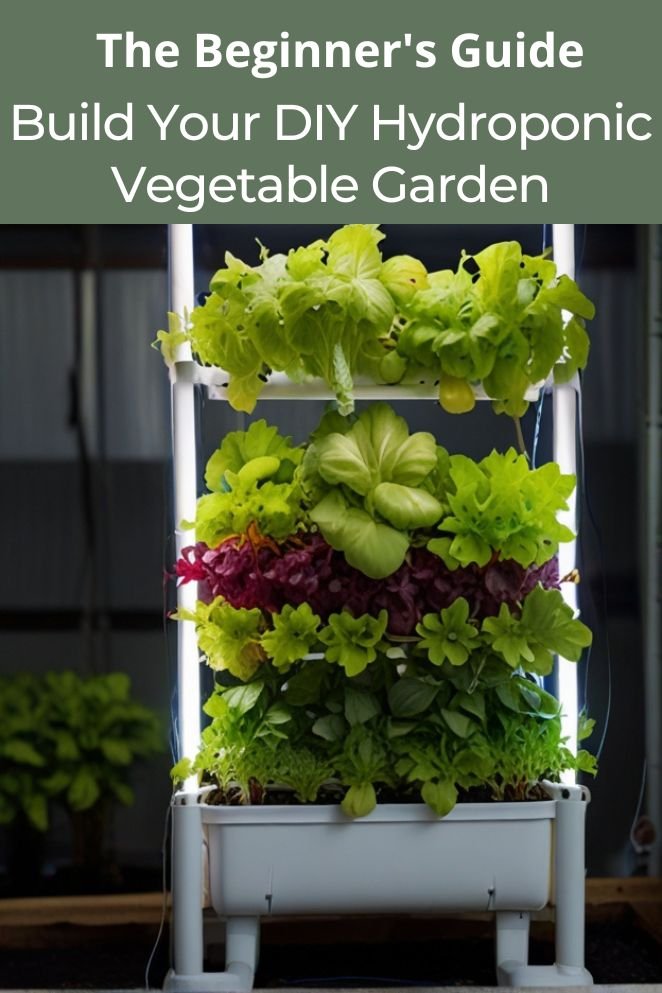
Growing your own vegetables in a hydroponic garden can be an exciting and rewarding experience.
Hydroponics is a soil-less method of growing plants using a nutrient-rich solution instead.
This method allows you to grow fresh, healthy produce right in your own home, regardless of the weather or soil conditions.
In this blog post, we’ll guide you through the process of setting up a DIY hydroponic garden, from planning to planting and maintenance.
Benefits of Hydroponic Gardening
Hydroponic gardening offers several advantages over traditional soil-based gardening, including:
- Water conservation: Hydroponic systems use significantly less water than traditional gardening, as the water is recycled and reused.
- Space efficiency: Hydroponic gardens require less space than traditional gardens, as they can be set up vertically or in smaller areas.
- Energy efficiency: Hydroponic systems can be more energy-efficient than traditional gardening, as they allow for precise control over environmental factors like temperature and light.
- Pest and disease control: Hydroponic gardens are less susceptible to pests and diseases, as they are grown in a controlled environment.
- Faster growth: Hydroponic plants can grow faster than those grown in soil, as they receive optimal nutrients directly from the water solution.
- Year-round growing: Hydroponic systems allow for year-round growing, as they are not dependent on seasonal conditions.
- Reduced waste: Hydroponic gardens can minimize food waste, as they are grown in close proximity to consumers, reducing the need for long-distance transportation.
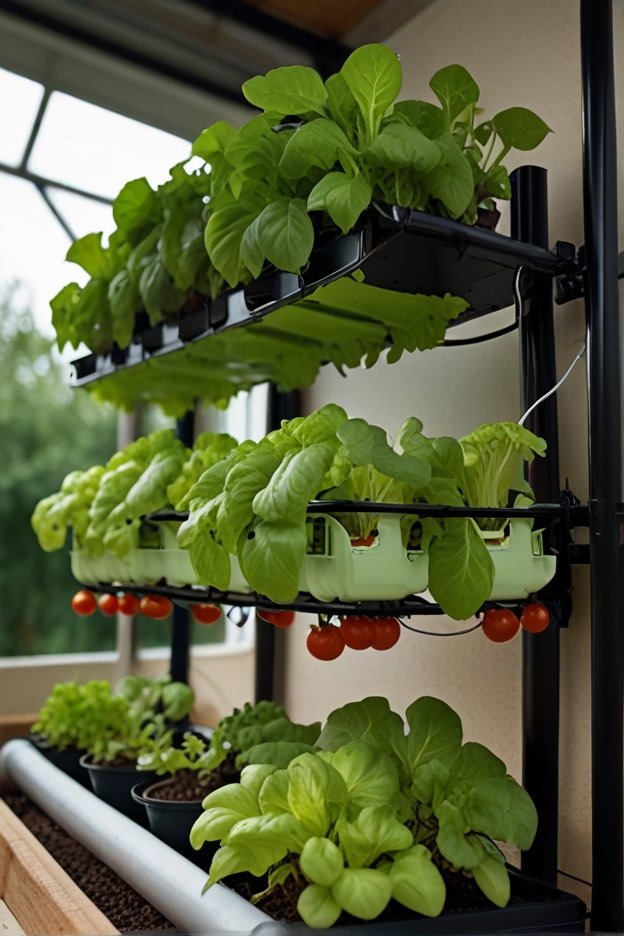
- Read also: DIY Plant Stands Indoor for Every Style
- Read also: Crafting Your Urban Oasis: DIY Plant Shelf Indoor Ideas
Planning Your DIY Hydroponic Garden
Planning your own DIY hydroponic garden can be an exciting and rewarding endeavor, but it’s important to consider several factors to ensure success.
Here’s a step-by-step guide to help you get started:
Choosing a system
Before diving into your hydroponic adventure, you’ll need to decide which system is best suited for your needs.
There are several options available, each with its own set of advantages and drawbacks.
Kratky method
This method is known for its simplicity and affordability.
It involves placing plants in a container filled with nutrient solution, which is gradually absorbed as the plants grow.
While easy to set up, the Kratky Method is best suited for smaller plants and may yield lower harvests compared to other systems.
Deep Water Culture (DWC)
DWC systems are straightforward to set up and maintain.
Plants are suspended in a reservoir of nutrient-rich water, with their roots submerged.
However, this method requires diligent monitoring of nutrient levels to prevent imbalances that could harm plant growth.
Nutrient Film Technique (NFT)
NFT systems are known for their efficiency and suitability for larger plants.
In this method, a thin film of nutrient solution flows over the plant roots, providing them with essential nutrients.
While highly efficient, NFT systems tend to be more complex and costly to set up.
Location
Once you’ve chosen a hydroponic system, it’s crucial to select the right location for your garden.
Consider factors such as sunlight exposure, temperature, and access to water and electricity.
Ideally, you’ll want a sunny spot with consistent access to these resources to ensure optimal plant growth.
Gather your supplies
Before getting started, make sure you have all the necessary supplies for your hydroponic setup.
Essential items include a suitable container, growing medium (such as net cups or rockwool), nutrient solution, and a pump if required.
To keep costs down, consider using recycled containers, DIY growing mediums, and pre-mixed nutrient solutions available at gardening stores.
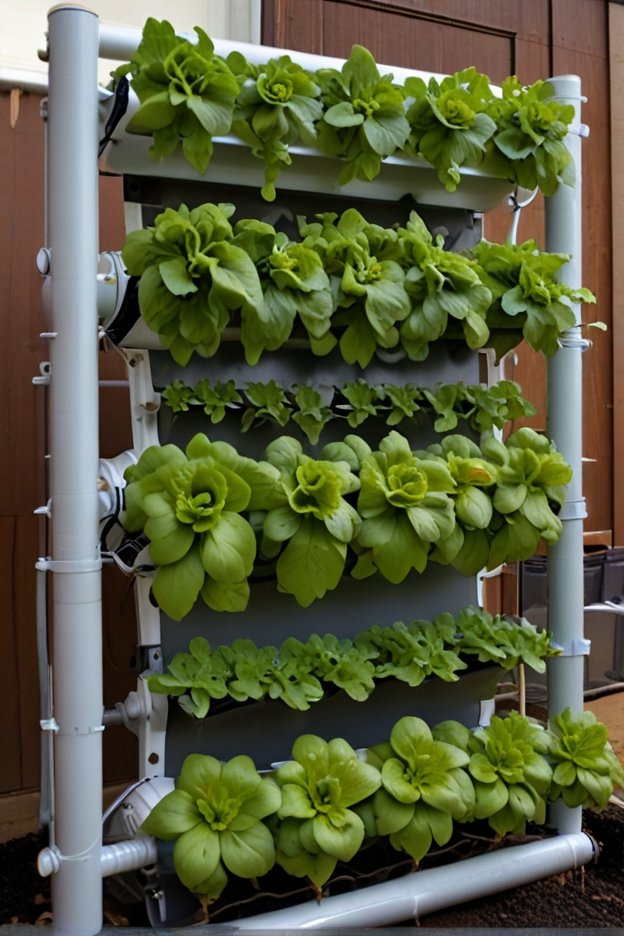
Building Your Hydroponic System (Step-by-Step Guide)
Building your own hydroponic system can be a fun and rewarding project, allowing you to grow fresh produce right in your own home.
Here’s a step-by-step guide to help you set up your hydroponic garden:
Preparing the container
Drill Holes for drainage and air intake
Use a drill to create holes in the bottom of your container to allow excess water to drain out.
Adequate drainage is essential to prevent waterlogging, which can lead to root rot and other issues.
Additionally, drill holes or install vents near the top of the container to ensure proper air circulation and oxygenation for the roots.
Attach components
If you’re using a pump or lighting system, now is the time to attach them to the container.
Position the pump near the bottom to facilitate nutrient circulation, and install the lighting system above the plants to provide adequate illumination for growth.
Ensure that all components are securely attached and properly wired for safety.
Setting up the growing medium
Fill the container
Once the container is prepared, fill it with your chosen growing medium.
Common options include net cups, rockwool cubes, or perlite.
The growing medium provides support for the plant roots and helps maintain moisture levels.
Ensure that the medium is evenly distributed throughout the container and level to provide a stable base for your plants.
Place the plants
Carefully transplant your seedlings or young plants into the growing medium, ensuring proper spacing between each plant.
This allows room for growth and prevents overcrowding, which can lead to competition for nutrients and hinder development.
Gently firm the growing medium around the roots to provide stability and ensure good contact for nutrient absorption.
Mixing the nutrient solution
Follow instructions
Refer to the instructions provided with your nutrient solution package for proper mixing ratios.
Typically, you’ll need to measure out the appropriate amount of solution based on the volume of water in your container.
Use a measuring cup or scale to ensure accuracy and avoid over or underfeeding your plants.
Adjust pH level
Test the pH level of your nutrient solution using a pH testing kit.
Most plants prefer a slightly acidic pH range between 5.5 and 6.5 for optimal nutrient uptake.
If the pH is outside of this range, use pH-adjusting solutions or additives to bring it into the recommended range.
Regularly monitor and adjust the pH as needed to maintain optimal conditions for plant growth.

Planting and Maintaining Your Hydroponic Garden
Choosing the right vegetables
When selecting vegetables for your hydroponic garden, it’s essential to choose varieties that thrive in hydroponic environments.
Lettuce, herbs (such as basil, mint, and cilantro), tomatoes, and peppers are all excellent choices for hydroponic cultivation due to their adaptability to soilless growing conditions and relatively short growing cycles.
Planting your seeds or seedlings
Start by germinating your seeds in a separate container or seed tray filled with a moist growing medium, such as rockwool or peat pellets.
Keep the seeds warm and moist until they germinate, typically within a week or two, depending on the variety.
Once your seeds have sprouted and developed into seedlings, carefully transplant them into your hydroponic system.
Gently remove each seedling from its container, being careful not to damage the delicate roots.
Place the seedlings into the prepared growing medium, ensuring proper spacing between each plant to allow for adequate airflow and light penetration.
Firm the growing medium around the roots to provide stability and support for the young plants.
Maintaining your garden
Regular maintenance is essential for the health and productivity of your hydroponic garden.
Here are some key tasks to include in your maintenance routine:
- Monitor pH and Nutrient Levels: Check the pH and nutrient levels of your hydroponic solution regularly using a pH meter and nutrient testing kit.
- Adjust lighting: Some plants may require specific light levels to thrive. If you notice signs of light deficiency, such as slow growth or stretching, consider adjusting the positioning or intensity of your grow lights to provide adequate illumination.
- Check for pests and diseases: Regularly inspect your plants for signs of pests, such as aphids, mites, or fungal diseases.
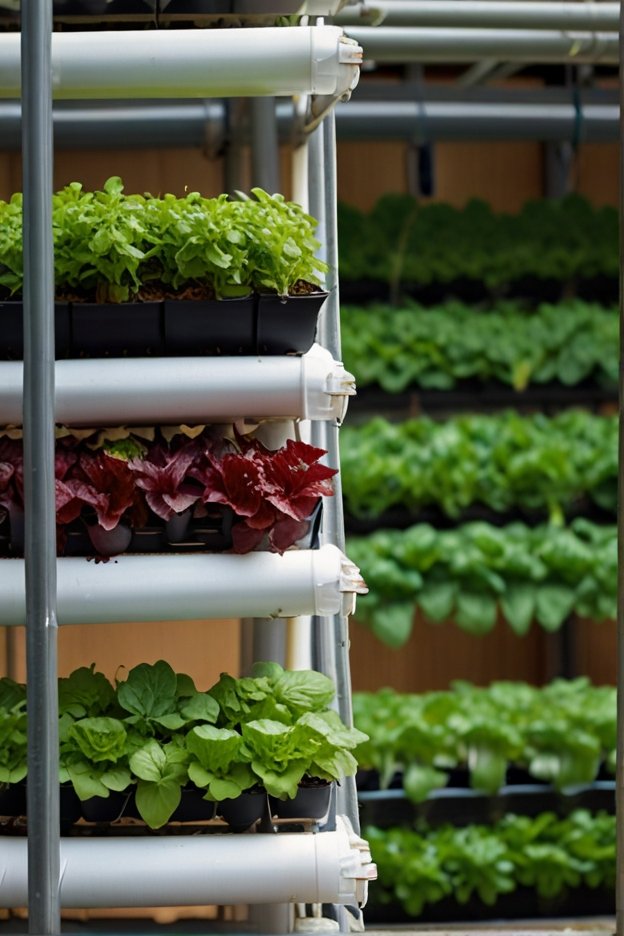
- Read also: A Comprehensive Guide – DIY Plant Pot From Clay
- Read also: DIY Garden Decor Ideas From Old Tires
Conclusion
DIY hydroponic gardening is a fun and fulfilling hobby that allows you to grow your own fresh produce at home.
By following these steps and considering the specific needs of your chosen vegetables, you can create a thriving hydroponic garden that provides you with delicious, healthy food.
FAQs
Hydroponics offers several advantages over soil gardening, including faster growth rates, higher yields, and the ability to grow plants in any climate or soil conditions.
While some fruits can be grown hydroponically, they are generally more challenging than vegetables. It is recommended to start with vegetables and herbs before attempting to grow fruits.
Check the pH and nutrient levels at least once a week, or more frequently if you notice any signs of plant stress.

